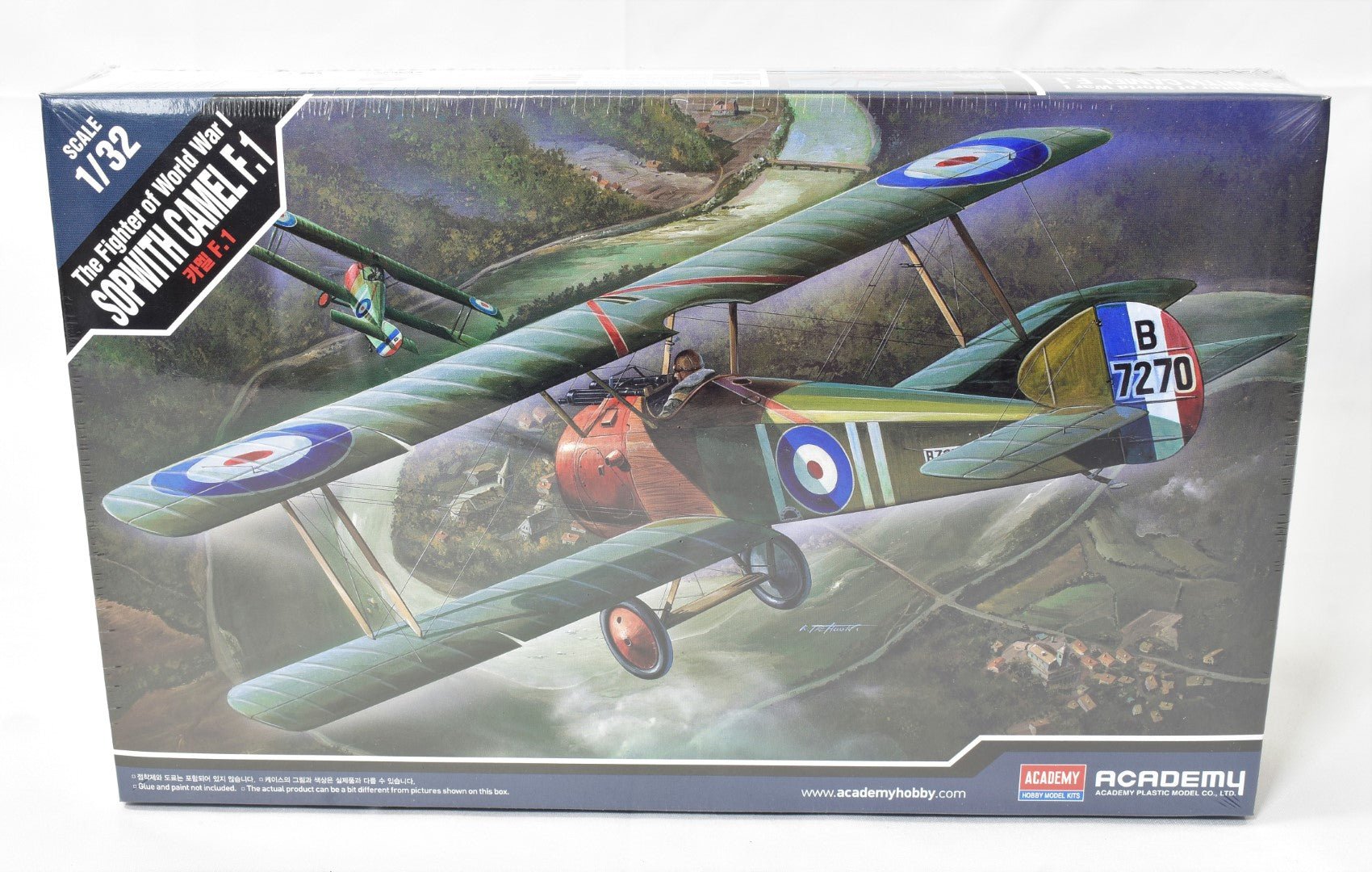Not done a blog for a while but this new arrival to the shop really stood out. If it is good enough for Biggles it is good enough to be our Model of the Month and have its own blog page.
The Legendary Sopwith Camel.
Model kits tend to focus more on the Second World War and onwards. So when this Academy model kit of a World War 1 icon landed in our stock we had to make it Model of the Month.
Along with being a great looking aircraft, the Sopwith Camel also has some impressive and interesting facts.

The Camel got its name from a metal fairing over the gun breaches of its twin Vickers machine guns. The fairing was designed to stop the guns freezing at high altitude but gave the plane a hump. This led the pilots to refer to the plane as the Camel.
The camel was powered by a single rotary engine that had a fixed crankshaft so the entire engine crankcase and cylinders rotated around it. The entire engine spinning created a gyroscopic effect that made the plane turn very slow to the left, but it could turn right quicker than any other fighters.
Due to 90% of the planes weight being located in the front 7 feet and the gyroscopic effect of the spinning engine, it was a difficult plane to fly. Sadly many pilots were killed learning to fly the Camel.

Once a pilot mastered it's unstable characteristics, the Sopwith Camel became a highly manoeuvrable and effective fighter. Camel pilots have been credited with downing 1,294 enemy aircraft, more than any other allied aircraft of the war.
Major Billy Barker used the same Sopwith Camel to shoot down 46 aircraft and balloons from 1917 to 1918, making it the most successful fighter in RAF history.

With it's incredible history, impressive stats and amazing stories, the Camel is truly an aviation great. It also makes for a nice model kit.




